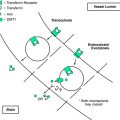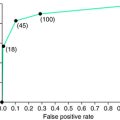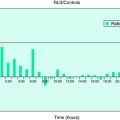Chapter 29 Introduction to Management of Restless Legs Syndrome
As demonstrated by the chapters that follow, there are numerous therapies that have been tried for the restless legs syndrome (RLS), and for many of them there is some evidence of success. Although it is fairly easy to summarize—and assess—the evidence for specific treatments, a management plan has been more a matter of expert opinion. The basis for management was set out by the American Academy of Sleep Medicine (AASM) Standards and Practice Committee (SPC) in their first standards for RLS treatment in 1999.1 That document specific elements that were standards, that is, essentially mandated (the SPC indicates that a standard is, “a generally accepted patient-care strategy which reflects a high degree of clinical certainty”), for the proper management of RLS patients:
The one publication presenting a somewhat comprehensive algorithm for management was produced several years ago by the Medical Advisory Board of the RLS Foundation (RLSF).2 By now, some of its specific recommendations are somewhat outdated, but the general scheme remains quite valid. First, the algorithm suggests three major classes of patients—those with intermittent RLS who may need only occasional therapy, those with daily or near-daily RLS who will benefit from daily medication, and those who have become refractory to initial first-line therapy, especially those who cannot tolerate or have developed augmentation on one or more agonists. Second, the scheme indicates that nonpharmacological therapy, mainly behavioral therapy and the avoidance of provocative substances, is something that should be incorporated into the management scheme for all patients, even if pharmacological therapy is also mandated. Third, the scheme recognizes the importance of assessing iron status and treating iron deficiency if it exists. Fourth, the algorithm suggests ways to manage the various classes of patients (Table 29-1).
TABLE 29-1 The Restless Legs Syndrome Foundation Medical Advisory Board Update
| Intermittent RLS | |
| PRN medications | Levodopa rapid-release formulations |
| Mild to moderate opioids | |
| Sedative hynotics (for sleep-related symptoms) | |
| Non–ergot dopamine agonists (need longer for onset) | |
| Daily RLS | |
| Daily treatment primarily monotherapy | Non–ergot dopamine agonists (pramipexole and ropinirole approved as of December 2007) |
| Anticonvulsants, especially gabapentin | |
| Mild to moderate-strength opioids | |
| Sedatives/hypnotics (primarily for sleep-related symptoms) | |
| Refractory RLS | |
| Tailor to individual history or problems | Reduced or divided doses of dopamine agonist (primarily for augmentation) |
| Use of second-line agents (anticonvulsant-opioid) | |
| Combined treatment (usually dopamine agonist plus) | |
| Drug holiday or rotating therapy? | |
| Strong opioids—especially methadone— for most severe | |
It should be noted that currently, in both Europe and the United States, the only approved medications are non–ergot dopamine agonists (pramipexole, ropinirole) and they are specifically targeted at mild to moderate idiopathic patients who require once-a-day dosing. Of course, they can be used off-label for different patient groups or with different dosing schemes. Two new drugs have been moving toward approval and conceivably there may be some new approvals within the next 2 years: one is a non–ergot dopamine agonist in a patch formulation that provides continuous coverage (rotigotine), and the second is a gabapentin prodrug (currently known only by a manufacturer’s code, XP13512) that has a long duration of action. Recently, there have been abstracts indicating the development of a sustained release formulation of ropinirole. This formulation is also under regulatory review (as of December 2007). These developments underline a recent trend: Based on cabergoline data that showed lower levels of augmentation,3,4 it has been suggested that either longer half-life medications or more constant blood levels may reduce the tendency of dopaminergics to cause augmentation. As a result, a number of the new agents under development provide for a longer duration of action. This also corresponds to the growing recognition that, even though RLS is worse at night, it is a diurnal disease as well. Amelioration of evening and nighttime symptoms may unmask previously underappreciated daytime ones.
One way to summarize information about the benefits of specific therapies has been the evidence-based reviews. These may result in recommendations or only assess the weight of the evidence in support of a particular therapy. The AASM produced the first evidentiary review5 and the resulting standards,1 mentioned earlier, published in 1999 and covering papers published through 1998. An update review6 and standards7 published in 2004 extended the literature base to 2002. In 2006, the European Federation of Neurological Societies published a combined review and recommendations covering the literature through 2004.8 The Movement Disorder Society (MDS) began a review process in 2006 and expects to publish an evidentiary review, without specific standards, early in 2008. The MDS is collaborating with the International RLS Study Group and the World Association of Sleep Medicine, to avoid duplicative efforts. The MDS review covers literature at least electronically published by the end of 2006. A literature review and recommendations have just been commenced by the American Academy of Neurology and should cover at least most of 2007 and be published some time in 2009. What is striking is the large number of independent reviews. What is also notable, considering the literature covered and the date of publication, is that in such a fast-moving field as RLS, the reviews are somewhat out of date even at the moment of publication.
The current area of treatment has roots going back to the 1970s and 1980s when the use of dopaminergics, opioids, anticonvulsants, and sedatives/hypnotics was first described. What has brought about the current development has been the interest of the pharmaceutical industry in RLS, but these companies have followed in the same path and have focused on the same types of drugs as used earlier. Because only dopaminergics have been approved, there may be more room for the development in the near future of other classes of medications occupying somewhat distinct therapeutic niches. Treatments of intermittent RLS and combination or other treatment schemes for refractory RLS need to be explored. However, the recent discoveries in the iron-dopamine pathology of RLS and the discovery of clear genetic determinants also offer the possibility for broadening the range of therapeutic options in the near future. Stay tuned!! We expect there will be many new developments during the next decade.
1. Chesson ALJr, Wise M, Davila D, et al. Practice parameters for the treatment of restless legs syndrome and periodic limb movement disorder. An American Academy of Sleep Medicine Report. Standards of Practice Committee of the American Academy of Sleep Medicine. Sleep. 1999;22:961-968.
2. Silber MH, Ehrenberg BL, Allen RP, et al. An algorithm for the management of restless legs syndrome. Mayo Clin Proc. 2004;79:916-922.
3. Trenkwalder C, Benes H, Grote L, et al. Cabergoline compared to levodopa in the treatment of patients with severe restless legs syndrome: Results from a multi-center, randomized, active controlled trial. Mov Disord. 2007;22:696-703.
4. Stiasny-Kolster K, Benes H, Peglau I, et al. Effective cabergoline treatment in idiopathic restless legs syndrome. Neurology. 2004;63:2272-2279.
5. Hening W, Allen R, Earley C, et al. The treatment of restless legs syndrome and periodic limb movement disorder. An American Academy of Sleep Medicine Review. Sleep. 1999;22:970-999.
6. Hening WA, Allen RP, Earley CJ, et al. An update on the dopaminergic treatment of restless legs syndrome and periodic limb movement disorder. Sleep. 2004;27:560-583.
7. Littner MR, Kushida C, Anderson WM, et al. Practice parameters for the dopaminergic treatment of restless legs syndrome and periodic limb movement disorder. Sleep. 2004;27:557-559.
8. Vignatelli L, Billiard M, Clarenbach P, et al. EFNS guidelines on management of restless legs syndrome and periodic limb movement disorder in sleep. Eur J Neurol. 2006;13:1049-1065.





